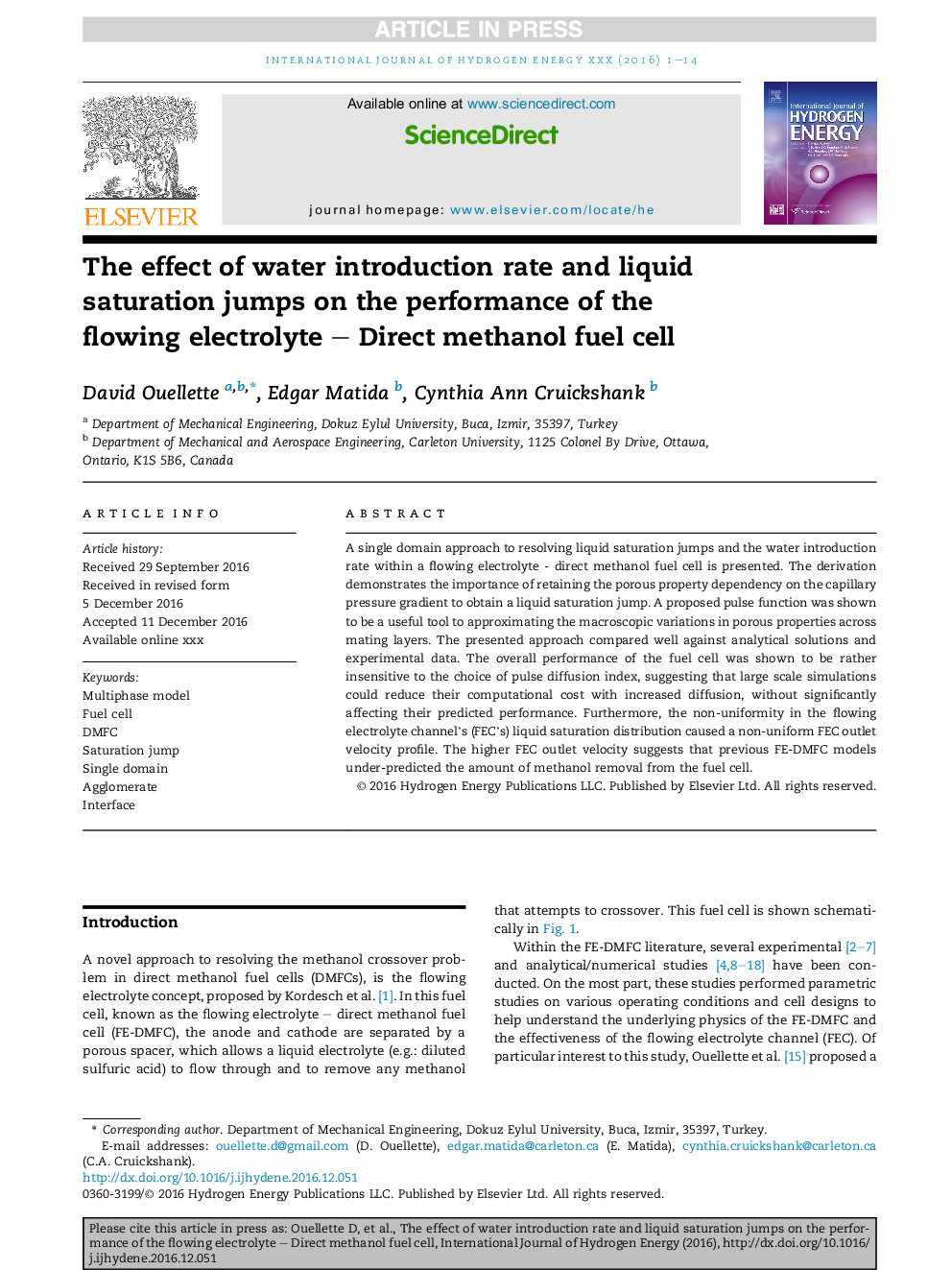| Article ID | Journal | Published Year | Pages | File Type |
|---|---|---|---|---|
| 5147335 | International Journal of Hydrogen Energy | 2017 | 14 Pages |
Abstract
A single domain approach to resolving liquid saturation jumps and the water introduction rate within a flowing electrolyte - direct methanol fuel cell is presented. The derivation demonstrates the importance of retaining the porous property dependency on the capillary pressure gradient to obtain a liquid saturation jump. A proposed pulse function was shown to be a useful tool to approximating the macroscopic variations in porous properties across mating layers. The presented approach compared well against analytical solutions and experimental data. The overall performance of the fuel cell was shown to be rather insensitive to the choice of pulse diffusion index, suggesting that large scale simulations could reduce their computational cost with increased diffusion, without significantly affecting their predicted performance. Furthermore, the non-uniformity in the flowing electrolyte channel's (FEC's) liquid saturation distribution caused a non-uniform FEC outlet velocity profile. The higher FEC outlet velocity suggests that previous FE-DMFC models under-predicted the amount of methanol removal from the fuel cell.
Related Topics
Physical Sciences and Engineering
Chemistry
Electrochemistry
Authors
David Ouellette, Edgar Matida, Cynthia Ann Cruickshank,
